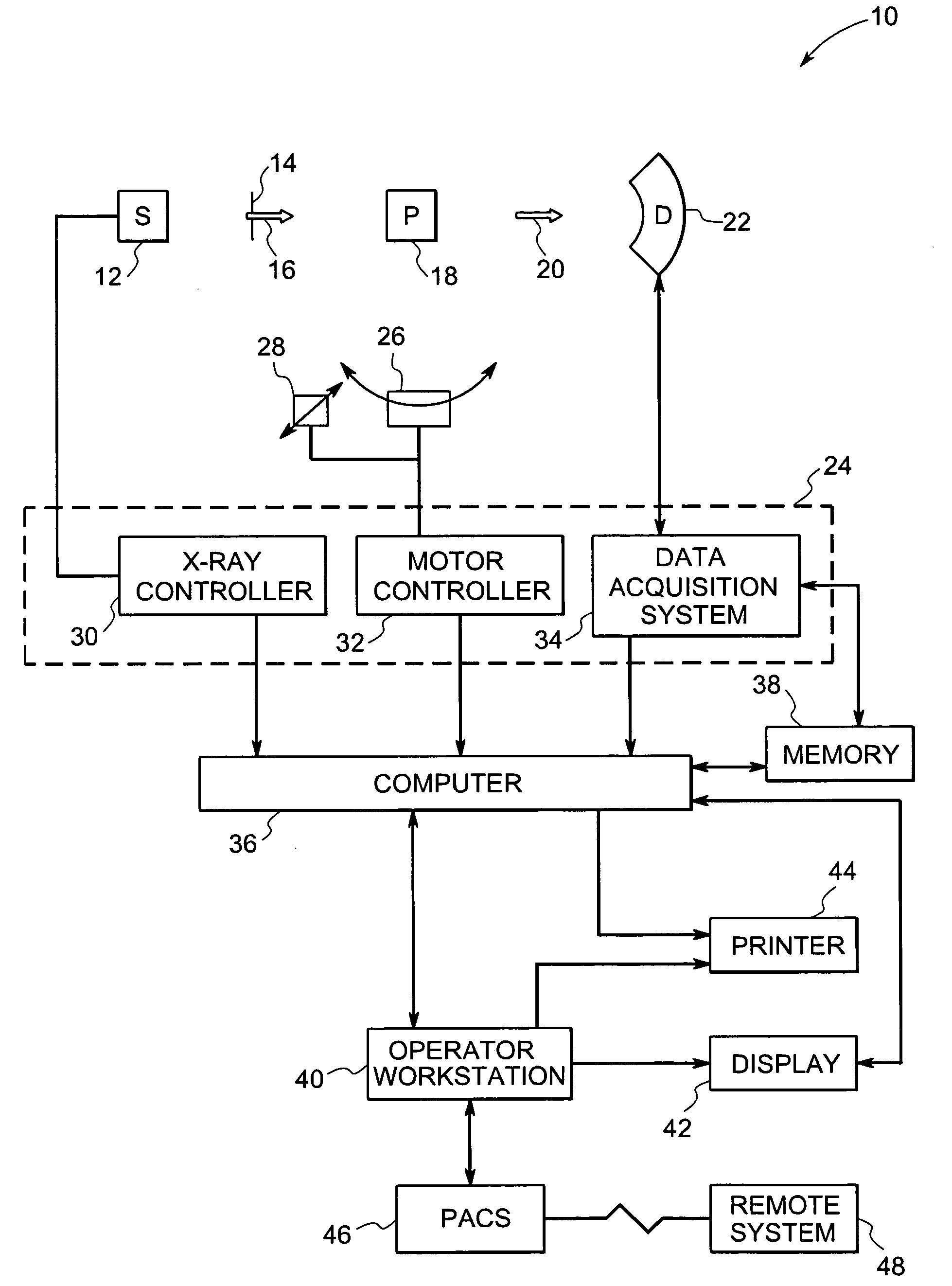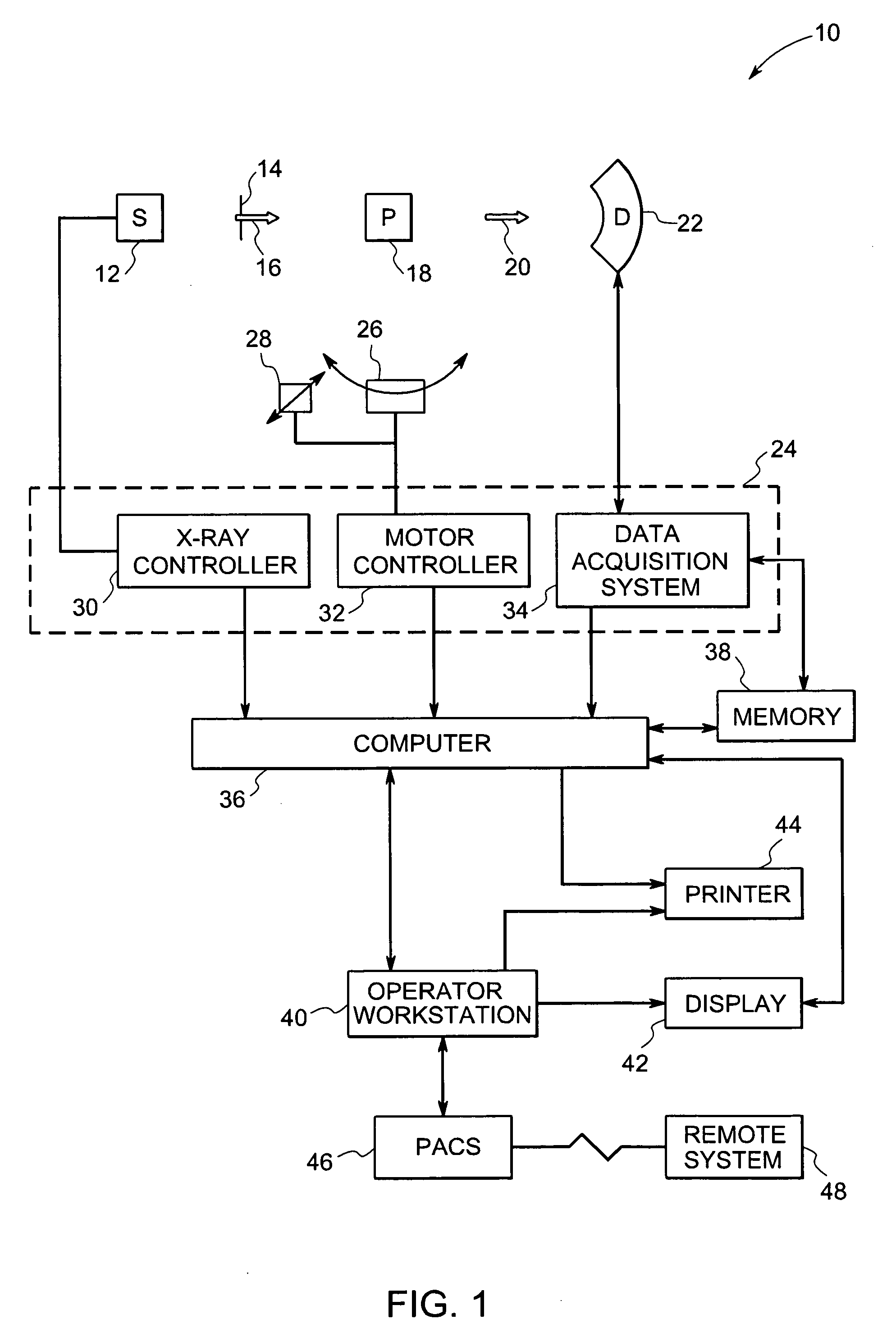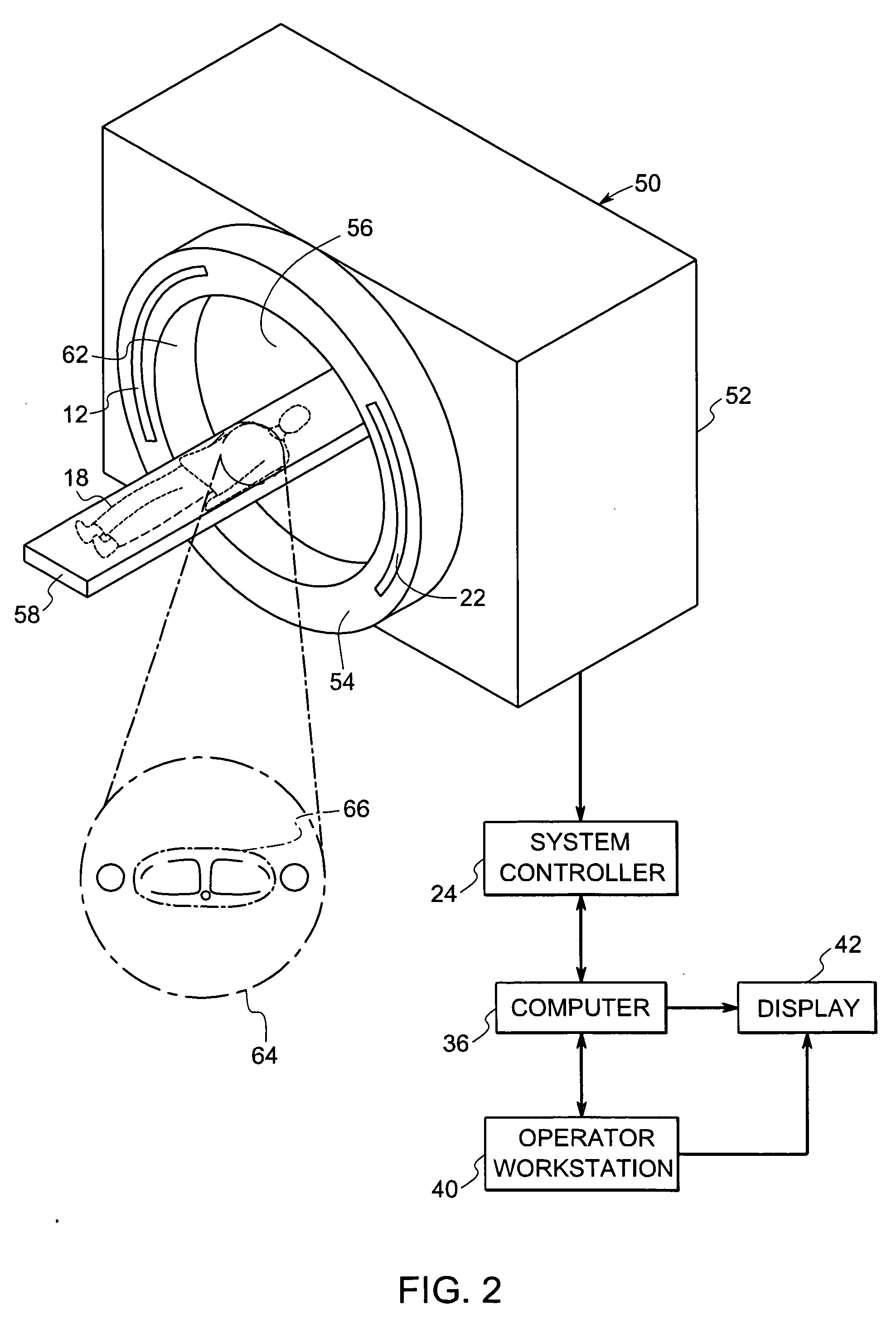Multi-layer direct conversion computed tomography detector module
a detector module and computed tomography technology, applied in the field of diagnostic imaging radiography detectors, can solve the problems of detector saturation, type of detectors that cannot count at the x-ray photon flux rate typically encountered, and inability to provide data or feedback as to the number and/or energy of photons detected, etc., to achieve the effect of facilitating electron collection
- Summary
- Abstract
- Description
- Claims
- Application Information
AI Technical Summary
Benefits of technology
Problems solved by technology
Method used
Image
Examples
Embodiment Construction
[0037] Conventional CT imaging systems utilize detectors that convert radiographic energy into current signals that are integrated over a time period, then measured and ultimately digitized. A drawback of such detectors however is their inability to provide data or feedback as to the number and / or energy of photons detected. Further, energy discriminating, direct conversion detectors are capable of not only x-ray counting, but also providing a measurement of the energy level of each x-ray detected. However, a drawback of these direct conversion semiconductor detectors is that these types of detectors cannot count at the x-ray photon flux rates typically encountered with conventional CT systems. Further, the very high x-ray photon flux rate has been known to cause pile-up and polarization that ultimately leads to detector saturation. In other words, these detectors typically saturate at relatively low x-ray flux level thresholds. It would therefore be desirable to develop a direct co...
PUM
 Login to View More
Login to View More Abstract
Description
Claims
Application Information
 Login to View More
Login to View More - R&D
- Intellectual Property
- Life Sciences
- Materials
- Tech Scout
- Unparalleled Data Quality
- Higher Quality Content
- 60% Fewer Hallucinations
Browse by: Latest US Patents, China's latest patents, Technical Efficacy Thesaurus, Application Domain, Technology Topic, Popular Technical Reports.
© 2025 PatSnap. All rights reserved.Legal|Privacy policy|Modern Slavery Act Transparency Statement|Sitemap|About US| Contact US: help@patsnap.com



